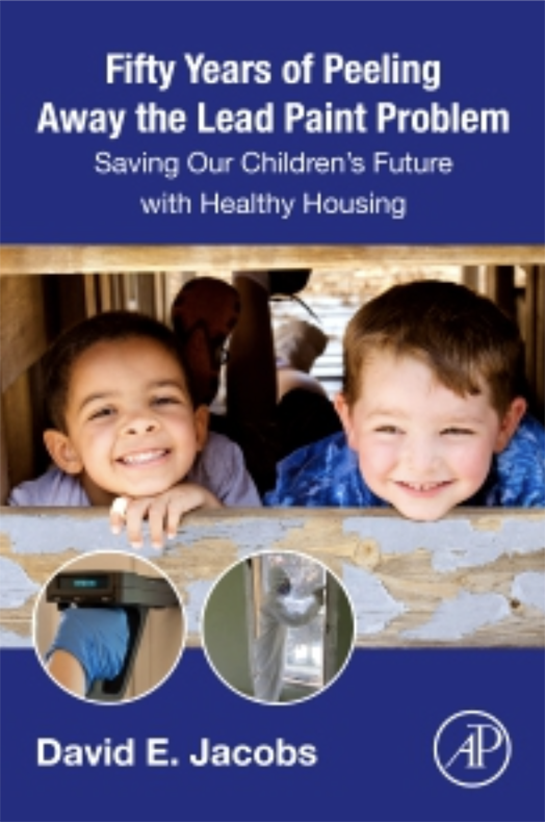David Jacobs
College of Public Health | Environmental and Occupational Health Sciences
David Jacobs
David Jacobs
David E. Jacobs, PhD, CIH, is currently adjunct associate professor at the University of Illinois Chicago School of Public Health. With over 120 peer-reviewed papers and more than 20 book chapters, he has conducted studies on health and other effects of green healthy housing, ventilation, asthma, indoor environmental quality, lead poisoning prevention and relationships between science and policy. He is a certified industrial hygienist and a licensed lead risk assessor in Illinois. He is the Chief Scientist at the National Center for Healthy Housing, previous director of the US Collaborating Center on healthy housing for WHO and a faculty associate at Johns Hopkins University. He previously was appointed Director of the Office of Lead Hazard Control and Healthy Housing at the US Department of Housing and Urban Development. For more than a decade, he has served as board president of Lincoln-Westmoreland Housing, a non-profit housing provider for more than a hundred low-income families in Washington DC. He is principal author of the 1999 Report to Congress that launched the nation’s Healthy Homes Initiative. He was a contributing author to the international WHO housing and health guidelines in 2018. His first book, “Fifty Years of Peeling Away the Lead Paint Problem: Protecting Our Children’s Future with Healthy Housing,” was published by Academic Press/Elsevier in 2022.
2

David Jacobs
He holds degrees in Environmental Engineering, Technology and Science Policy, Environmental Health, and Political Science.
Fifty Years Of Peeling Away The Lead Paint Problem: Saving Our Children's Future With Healthy Housing

Fifty Years of Peeling Away the Lead Paint Problem: Saving Our Children’s Future with Healthy Housing
Elsevier
This book is the first to document the history of childhood lead poisoning from paint between 1970-2022. These years marked scientific progress that helped overcome technical, political and policy challenges, with important implications for solving other seemingly intractable problems. It demonstrates how blood lead levels improved by more than 93% since the 1970s and presents a new strategic plan to protect the far too many children still at risk. Tracing the failure of the medical model (treatment after exposure) that marked the 1970s and 1980s and its replacement with a prevention housing-focused effort (acting before exposure occurs), the book documents the changes in health, housing and environmental science and policy that protected literally millions of children. It demonstrates the power of scientists working with parents and engaged citizens to demand change and to ensure decisionmakers act on the science. The book examines in detail how the main lead poisoning law in the US was passed in 1992 and later implemented and the emergence of a global healthy housing movement. It outlines how exposure pathway science produced the evidence needed to properly define what a “lead paint hazard” meant, and more importantly how to correctly remediate it in millions of homes. This book contains new stories and archived scientific data not available elsewhere. It describes the roles played by Congress, various Administrations, agencies, local governments, the private sector, researchers, and a popular citizen’s movement, especially parents. The role of the courts is discussed, including a controversial lead paint case on research ethics in Baltimore through an environmental justice lens. The book is the first to examine another recent court case in California, where ten local jurisdictions established a precedent by successfully suing the lead, paint and pigment industries to help pay for abatement, finally holding them accountable. The book closes by describing a “policy paralysis paradox,” in which some argued that the problem was too big and expensive to solve, yet at the same time others thought the problem did not exist at all—similar to recent experiences with the Covid-19 pandemic, climate change and other seemingly intractable dilemmas. The lead paint experience showed that by adopting 9 key actions, the paralysis was overcome. The 9 key lessons were: conduct research, translate the research into guidelines for practitioners in the field, produce legislation to turn those guidelines into law, conduct public education and advocacy, develop strategic plans at the national and local levels, harness market forces, develop subsidies and enforcement where the market fails, evaluate to make sure it is working and above all, take action to prevent exposure instead of waiting for children to be exposed needlessly. The book closes with a quote from President Franklin Roosevelt from his 1941 Dedication of the National Archives: “A nation must believe in 3 things: It must believe in the past, it must believe in the future, and it must above all believe in the capacity of its own people to learn from the past so that they can gain in judgment in creating their own future.”